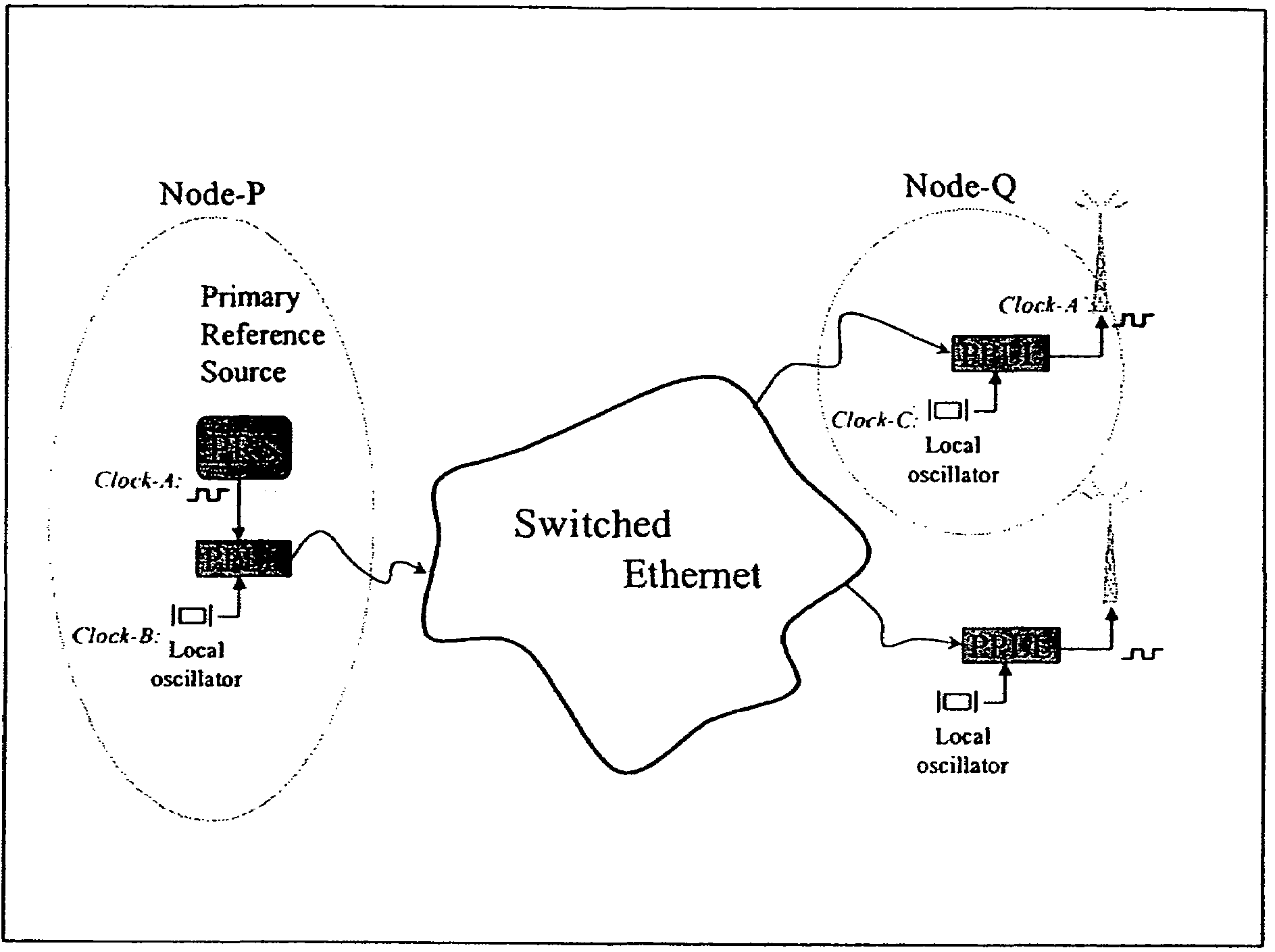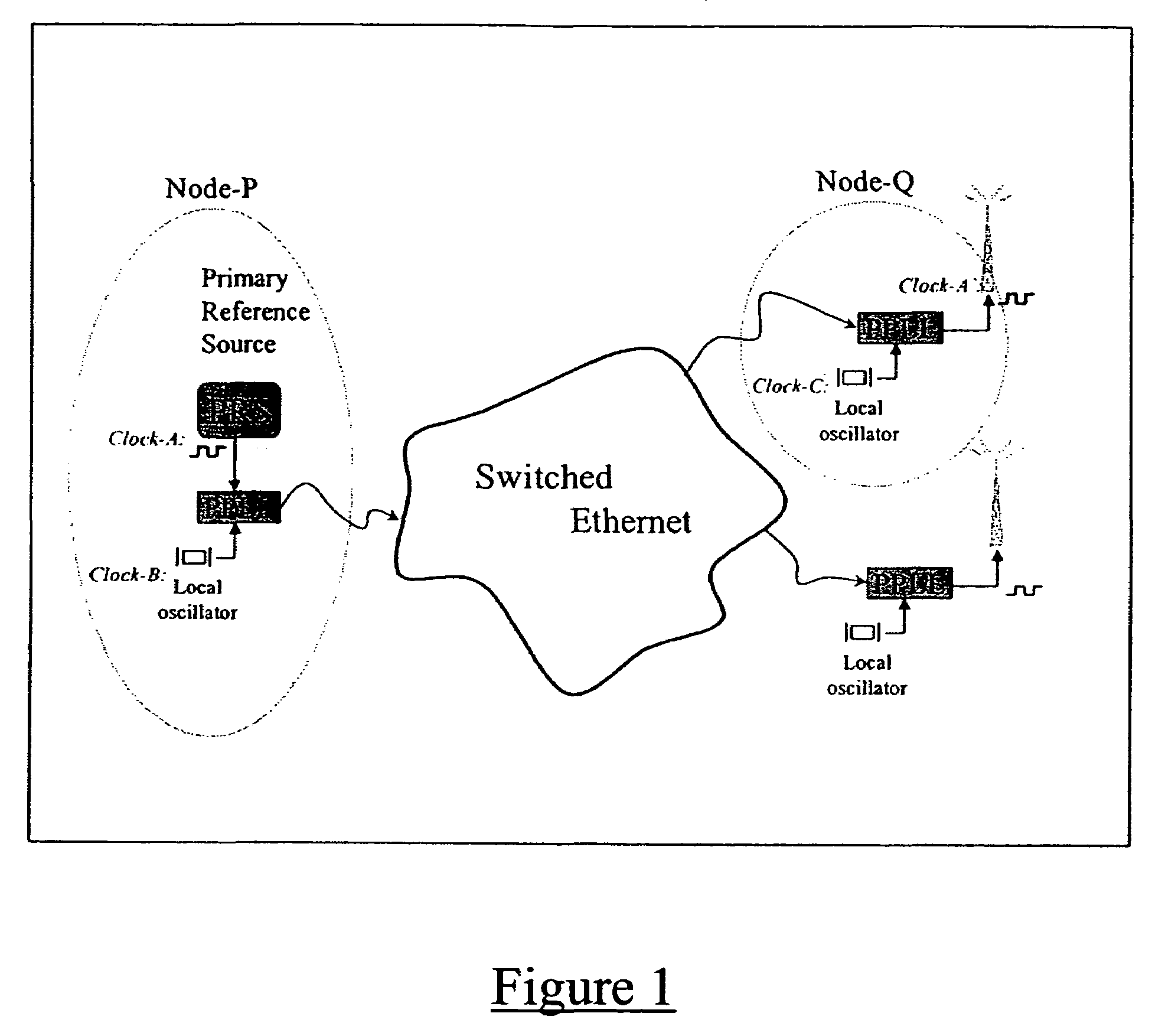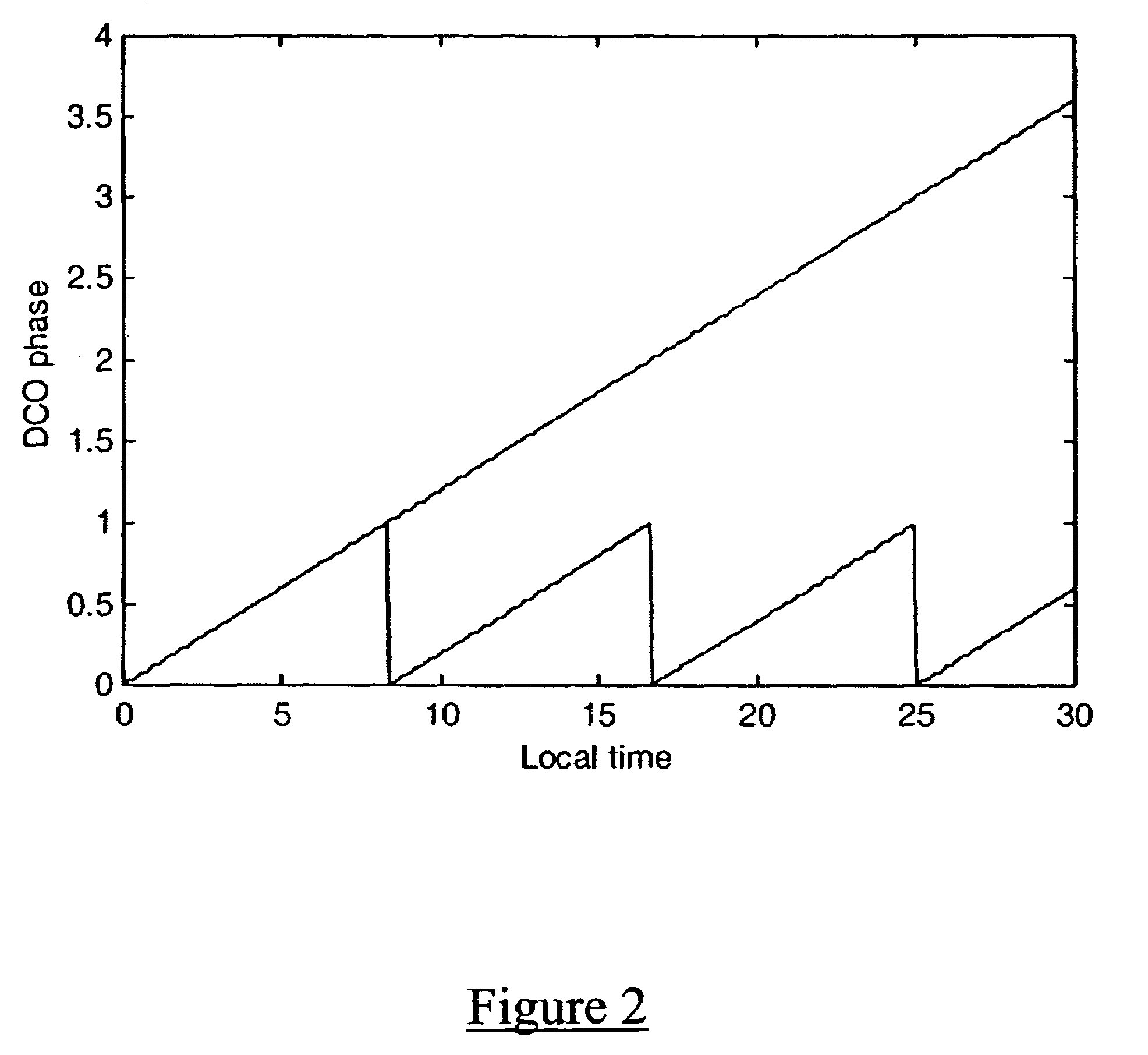Method providing distribution means for reference clocks across packetized networks
- Summary
- Abstract
- Description
- Claims
- Application Information
AI Technical Summary
Benefits of technology
Problems solved by technology
Method used
Image
Examples
Embodiment Construction
[0013]FIG. 1 shows a simple configuration with two slave nodes and a single reference clock. The local oscillator which is the basis clock for slave node Q is characterized against the local oscillator which is the basis clock for master node P. These local oscillators offer one place to perform a cost / benefit tradeoff—better, more expensive oscillators provide better performance.
[0014]FIG. 1 shows one reference clock “Clock A”. A series of alignment calculations is performed.
[0015]Alignment 1: Reference Clock Versus Master DCO
[0016]The DCO in the PPLL block at the master node will be locked to the incoming reference Clock A in a standard manner for digital PLLs: A PI-controller will lock the master DCO (acquisition PLL) to the reference clock.
[0017]Alignment 2: Master DCO Versus Master Local Time
[0018]The DCO ramp of the master describes a saw tooth as a function of its local time and represents unambiguously both phase and frequency of the reference clock (FIG. 2).
[0019]In the P-P...
PUM
 Login to View More
Login to View More Abstract
Description
Claims
Application Information
 Login to View More
Login to View More - R&D
- Intellectual Property
- Life Sciences
- Materials
- Tech Scout
- Unparalleled Data Quality
- Higher Quality Content
- 60% Fewer Hallucinations
Browse by: Latest US Patents, China's latest patents, Technical Efficacy Thesaurus, Application Domain, Technology Topic, Popular Technical Reports.
© 2025 PatSnap. All rights reserved.Legal|Privacy policy|Modern Slavery Act Transparency Statement|Sitemap|About US| Contact US: help@patsnap.com



